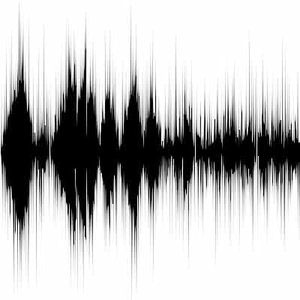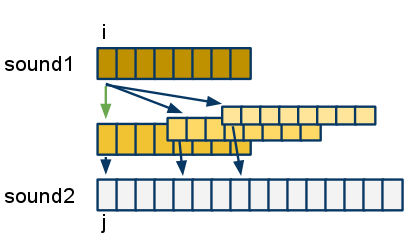Difference between revisions of "CSC231 Lab 6 2010"
(→Get sound files) |
(→Get sound files) |
||
| Line 28: | Line 28: | ||
==Get sound files== | ==Get sound files== | ||
| − | * Get some sample wav files | + | * Get some sample wav files: |
| − | getcopy hello.wav | + | getcopy [[media:hello.wav | hello.wav]] |
| − | getcopy goodbye.wav | + | getcopy [[media:goodbye.wav|goodbye.wav]] |
getcopy dratcomp.wav | getcopy dratcomp.wav | ||
getcopy force.wav | getcopy force.wav | ||
Revision as of 16:43, 25 October 2010
--D. Thiebaut 13:51, 25 October 2010 (UTC)
Contents
This lab covers sound files in the WAV format, and performing various operations on a sound file using array operations.
The Format of Sound Files
- The document https://ccrma.stanford.edu/courses/422/projects/WaveFormat/ covers the WAV format pretty well, and can be a source of additional information
Part 1
Get the code
- Get a copy of the required files
- or simply get them with getcopy
getcopy readWaveFileSkel.asm getcopy wav.inc
Get sound files
- Get some sample wav files:
getcopy hello.wav getcopy goodbye.wav getcopy dratcomp.wav getcopy force.wav getcopy takeover.wav
- Note: There's more at http://buggerluggs.tripod.com/ie/wav-dir184.htm and http://www.duke.edu/~rfb/palace/wavs/dratcomp.wav. If you want to download more to your account, simply find the URL of a wav file, for example http://www.duke.edu/~rfb/palace/wavs/energize.wav, then type the following command at the prompt:
wget http://www.duke.edu/~rfb/palace/wavs/energize.wav
Play the sound
- Play the files with aplay to make sure you can hear them:
aplay goodbye.wav Playing WAVE 'goodbye.wav' : Unsigned 8 bit, Rate 8000 Hz, Mono
- Important: make a note of the size of the samples, in this case 8 bits, unsigned.
Assemble, Link and Run
- Do not modify readWavFileSkel.asm yet. On its own it will create a new copy of the goodbye.wav under the name goodbye2.wav.
- Assemble and link the file
nasm -f elf readWavFileSkel.asm ld -o readWavFileSkel readWavFileSkel.o rm goodbye2.wav ./readWavFileSkel
- Check that you now have a new file in your directory called goodbye2.wav
- Play it.
aplay goodbye2.wav
- (Note: on a mac, you can use afplay from the command line instead of aplay.)
- You should hear the same thing as you did when listening to the goodbye.wav file.
Part 2
Test #1: Increase intensity, the simple way
- Make a copy of readWavFileSkel.asm and call it readWavFile1.asm
- Modify it so that you multiply the intensity of the sound by 2.
- Listen to the result. Can you understand the message?
Test #2: Increase intensity, the more sophisticated way
- You will have figured out that the previous method gives poor results. Instead try to figure out how we can mulitply an 8-bit sample by 2 in such a way that if the result is less than 255, we keep it as is, but if it is larger than 255, we force the sample to 255. In other words, figure out a way to implement this algorithm with the instructions you know:
sample = buffer[ i ];
sample = sample * 2;
if sample > 255:
sample = 255
- implement your solution in you readWavFile1.asm file, assemble, link, and listen to the result... Any better?
Test #3: Decrease Intensity
- Same thing, but this time you will divide the intensity by 2. A good way to divide by two is to shift the binary pattern to the right. For example, to shift right the contents of eax by one bit, do this:
shr eax, 1
Test #4: Twice the Sound
- Double up the size of the wav file, making it repeat the sound "goodbye" twice, so that you will hear "goodbye, goodbye".
Test #5: Add an echo...
- Figure out how to implement the "graphic" algorithm shown above:
- The original sound is Sound 1 ("goodbye" )
- you copy it once in a new buffer, in the same location
- you copy it a second time, decreasing its amplitude and adding it to the new buffer, with an offset of about 1500.
- you copy it a third time, decreasing its amplitude some more, and adding it to the new buffer, with an offset of about 3000.
- you copy the new buffer back into the wav buffer, and write the file to disk...

